February's blog comes from SGIF member and raingarden expert, Dr Brian D'Arcy. Here, he introduces a fantastic new community-based raingarden initiative to install 20 raingardens in and around Kinross in 2020:
What is a raingarden?
“An area of vegetation designed to accept rainfall runoff”
- These can be large scale ‘community raingardens’ – features draining a road or several properties.
- Or can be small scale (e.g. house plot)
Runoff is the rain draining from the roof, yard, driveway of a property, or from roads, fields, forests etc elsewhere. The rainwater draining from roads and other surfaces mobilises pollutants, as well as creating a flood risk. The raingardens use the natural self-purification properties of plants, sunlight and soils, to breakdown pollutants such as traces of oil in runoff. The features also have far more storage for rainstorm flood waters than conventional gullies and pipes.
There are several examples in Kinross-shire, as below, but a lot of scope for more:
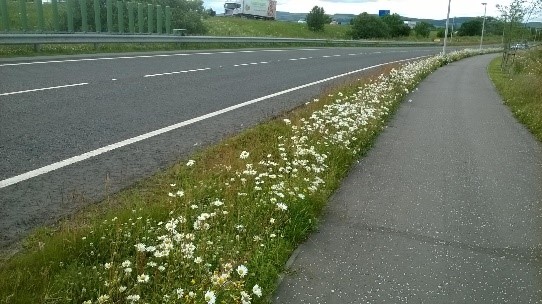

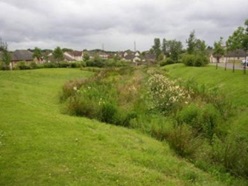
Wildflower swale (no road gully or drainage pipes on either side of the road) and a wetland, West Kinross
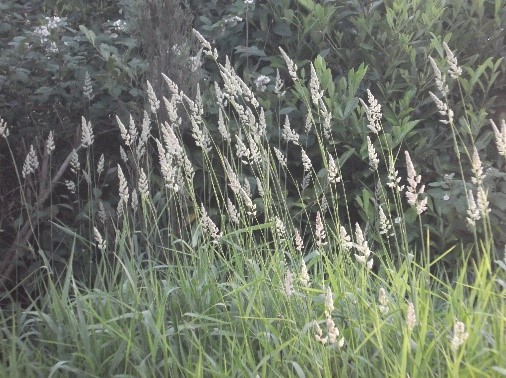
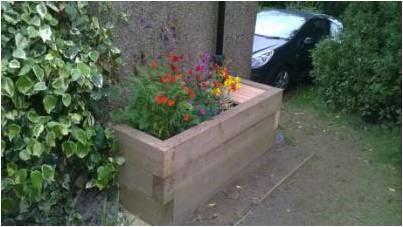
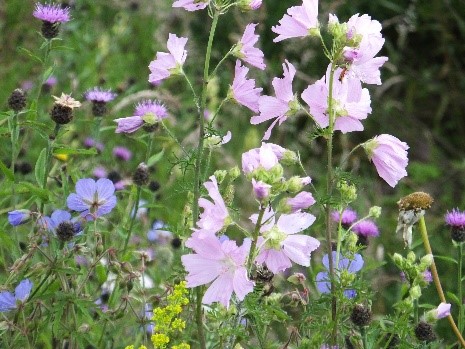
Raingarden soakaway and raised bed raingarden Kinnesswood, and feature at commercial unit, West Kinross
The Kinross-shire Civic Trust raingardens challenge
The Civic Trust has advocated better, more attractive and effectively drained houses and other developments in and around Kinross for many years. Place-making has become an in-vogue term in town planning, but the scope for raingardens is often overlooked. By setting the modest challenge to have 20 raingardens in 2020, the Trust is working with a range of local organisations to bring volunteer enthusiasm, backed by professional expertise and experience, to actively promote raingardens.
The Trust is encouraging properties across Kinross-shire to consider creating raingardens on their premises. Community benefits can include reduced risks of local flooding of properties and roads; the green space is the safest place for water from intense rainstorms to linger whilst harmlessly draining away. Other benefits can be habitat creation and habitat linkage. Especially in the older parts of town, taking the roof or driveway drainage out of the sewer system will help reduce sewer overflows during intensive rainstorms (an increasing problem with climate change in Britain). The Trust is also working to create a Raingardens Trail in West Kinross, promoting the existing features in dialogue with owner-occupiers (Perth and Kinross Council and local commercial sites).
What are other places doing?
Road traffic calming build-outs, and landscaping features in pedestrianised streets, are increasingly being created by local councils as multi-purpose features which add greenery and interest to the district. We would like to see this in Kinross-shire too.
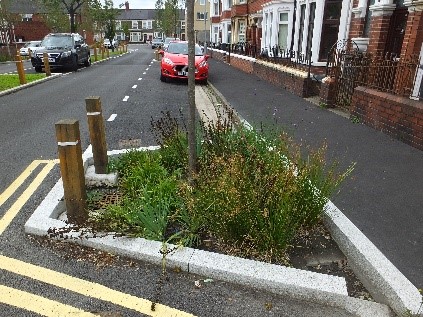
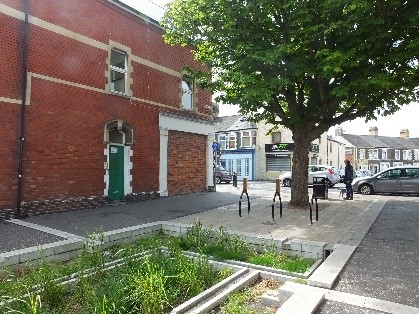

Cardiff (left, 1-2) – why not Kinross-shire? Melbourne
Green places are now recognised as important for a sense of well-being. Perth and Kinross could achieve similar successes.
How are we trying to encourage raingardens?
With support from local community groups, Scottish Water, Perth and Kinross Council, and SEPA, the Civic Trust hopes to facilitate the creation of 20 or more raingardens in Kinross-shire in 2020. The aim is to exemplify the opportunities with actual examples of good practice and publish that in new community publications, in magazines and blogs. The progress will be tracked and reported regularly in the Kinross Newsletter, through the Scottish Green Infrastructure Forum and their 10,000 Raingardens for Scotland campaign and on www.susdrain.org.uk .
We welcome opportunities to work with developers trying to maximise benefits from the requirements to drain their properties, and also interested individuals.
If you are interested, please contact us at This email address is being protected from spambots. You need JavaScript enabled to view it.


